The super brief story of the Hamantaschen:
This cookie isn’t just a cookie, no… this cookie is the tasty embodiment of the saviour of an entire people and ideology from being murdered off the map… ( YAY! We aren’t succumbing to genocide! Lets make some COOKIES!! ) Making cookies to celebrate life sounds like a PERFECTLY reasonable response to escaping death, but something’s telling me history has made a convenient story for this little cookie.
Sooo I’ve only enjoyed these cookies from the bakery every once and while – however, not being Jewish (well, having no religious upbringing at all), I didn’t realize the story behind these cookies. The story goes something like this: the Evil Villain Haman planned to kill all the Jews from the Persian Empire, but his plan was thwarted by the hero of the story, Queen Esther.
Who’s the Evil Villain Haman? and Queen Esther for that matter?
During the 5th century BCE in the ancient Persian Empire, the then King of Persia (Ahasuerus or Xerxes I… some debate there) appointed what appears to be a super wealthy ego-maniac as Prime Minister that goes by a single word name, HAMAN. Upon ascending to his role, the diva HAMAN decrees that everyone in the kingdom must bow down to him as if he were an idol. Mr. Mordecia living in Shushan (current day Susa, Iran) decided to say NOPE – me and my people are NOT bowing down to you. Period. In retaliation and upon discovering Mordecai’s Jewish faith, Haman decided that all the Jews of Shushan and the entire Persian Empire shall be killed, simple. He convinces the King that this was a great idea, so the King agrees, and confirms the plan. One small detail however… the King’s new wife, Queen Esther, is….JEWISH. (did he not think this through?) And she’s no ordinary Jewish woman either, she also happens to be the cousin and adopted daughter of Mordecai, the guy who defied Haman in the first place!
Not surprisingly, Mordecai has a direct line of communication to the Queen, his adoptive daughter, and he informs her of the craziness that is Haman. She convinces the King to not only stop the decree – but reverse it completely, authorizing the Jews to kill their enemy – Haman! Now it was Haman and his people that got the ax! (well, i’m not sure how they died – I think they were sent to the gallows…so no maybe no ax)
So in celebration of being saved by Queen Esther, the Jewish folks planned a massive feast called “Purim” that is usually sometime in February or March- which over time turned into a raucous festival with noise makers, costumes and mandatory alcohol drinking!
I’m no religious scholar – but I love how these western religions work. Do we think there’s any coincidence that this raucous party-like holiday also happens around the same time as the Mardi Gras and Carnival?.. I’m not discrediting any historical relevance – but all these holidays are quite similar in function, despite being formed for very different reasons… but honestly? After months of being cooped up inside during the cold winter – it’s probably a good time of year to bust loose and get crazy. However, I love the historical context and the resulting food traditions…and I always love a party.
So how did we get this delicious cookie?..
Where in that story is there any reference to a cookie?..
As far as I can tell, a cookie played no part in the evil plot by Haman and the foil of said plot and resulting salvation by Queen Esther – other than, now it’s part of a celebration in the form of a party called Purim, and that party includes cookies. Specifically, these three sided / pointed cookies that are stuffed with yummy fillings. The name of the cookie provides some context however – as it’s German. Supposedly these three sided cookies appeared in German speaking lands by the name of Mohntaschen around the 16th century – which may have been adopted as said party cookie Hamantaschen for the purposes of celebrating the end of Haman and the evil plot he wanted to carry out. In German, mohn translates to “poppy seed” and tashen means “pocket”. During winter, Poppy seeds were often harvested and eaten as a snack during an otherwise bleak period of the year. Poppy seeds can be made into jams and fillings for foods – and as a reminder, poppy seeds come from the opium poppy plant that also contain morphine and codeine compounds that for centuries have been used for its medicinal properties – so it’s entirely possible that that a mixture from the poppy plant containing seeds and concentrates of sap baked into a jam and stuffed into three sided cookies could produce an intoxicating treat – perhaps one perfectly suited for a crazy party?.. Who knows, it’s anyone’s guess.
Other more publicly accepted reasons for adopting the cookie is the shape – lore has it that the trifolded cookie was a direct replica of a similar trifolded hat that Haman himself wore. Also, the poppies supposedly represent money (coins) that filled Haman’s pockets (taschen) because of his wealth and the bribes he often took. The hat theory has been pretty much disproven and so the coin in pocket theory sort of stands alone. Personally, I’d like to believe the intoxicating German cookie theory – It certainly makes for a more fun party! (which is the point of the cookie, right?)
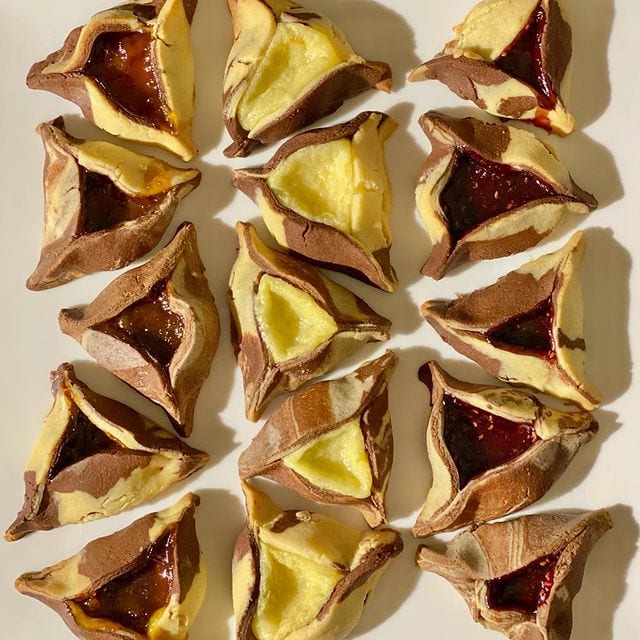
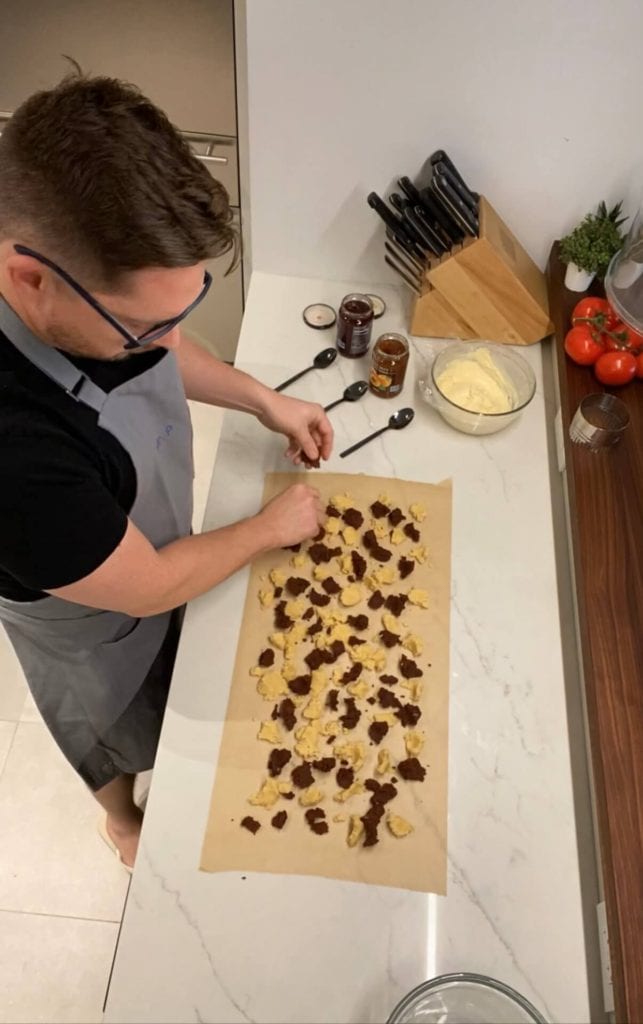
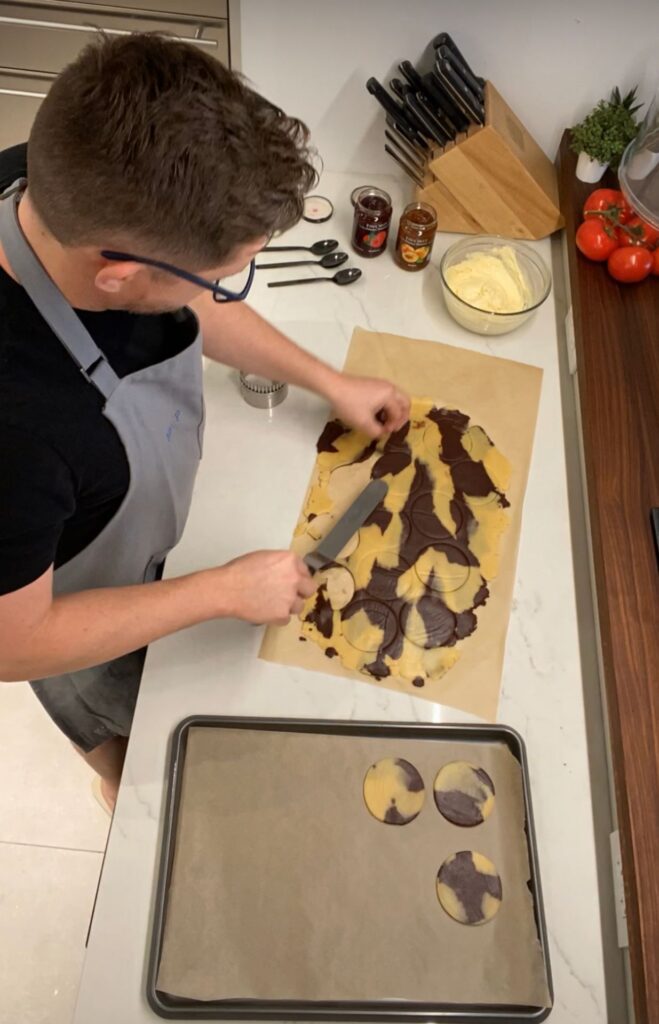
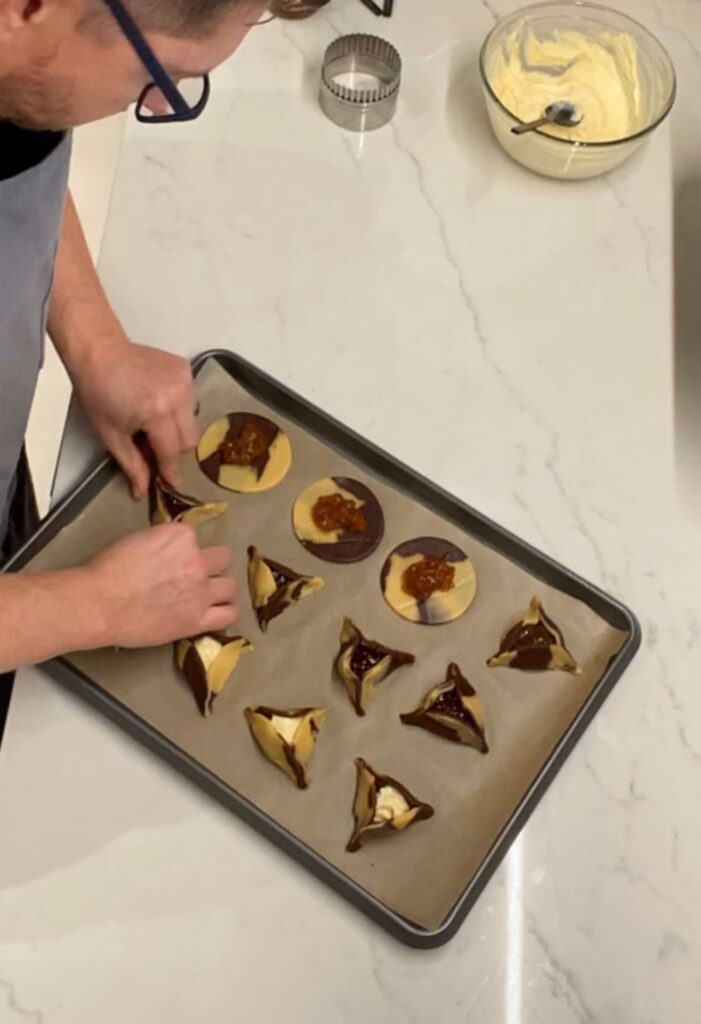
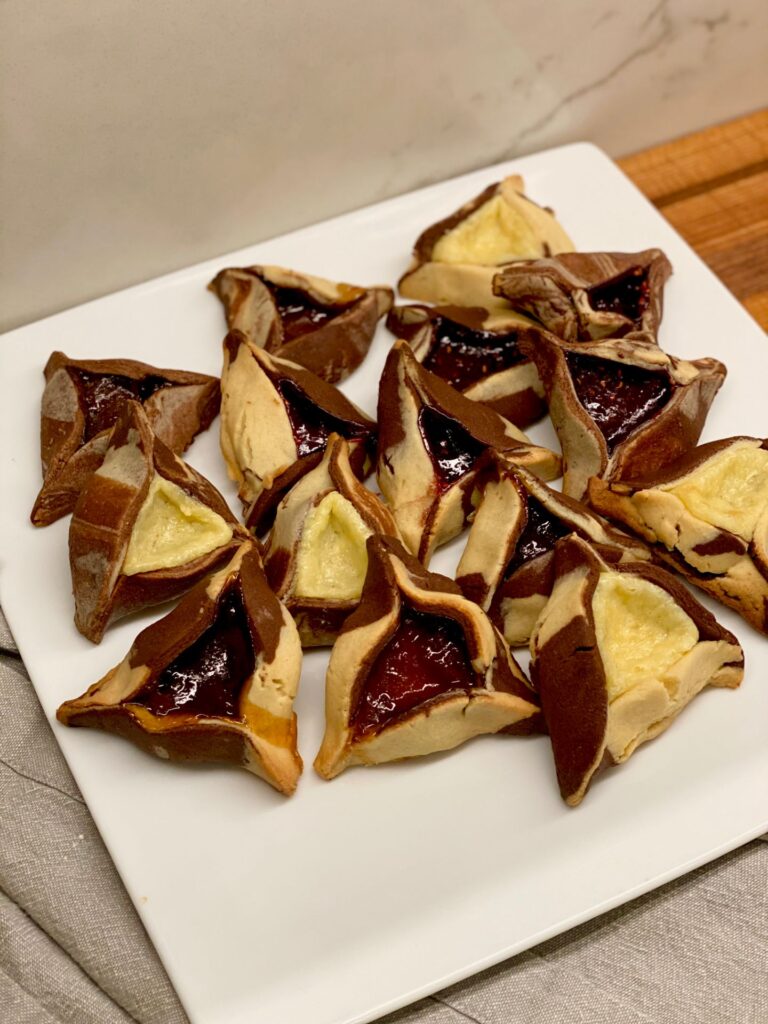

1 thought on “Marbled Hamantaschen”
Looks delicious!